Introduction, English Only
Greetings, friends!
Continuing the series of tutorials about the basics of Photography.
This is the third one and I'm going to write about Shutter Speed and give you some examples.
I hope you find them useful and easy to understand!
(All photographs used were taken by me. Some might have been shown on my blog already in another context.)
Previous Lessons:
Предишни уроци:
Photography Basics — Exposure — En and Bg Translation
Photography Basics — Aperture — En and Bg Translation
Shutter Speed
It determines how long a moment we capture. How long we expose our picture to light. The mechanical shutter is a system that opens and closes two curtains which are between the lens (that animal that sees and has an aperture that lets a beam of light in) and the sensor/film inside the camera's body (the animal upon which light imprints a painting). Those curtains (shutters) let light through for the time we specify — that is the Shutter Speed.
Shutter Speed is responsible for two major things.
First, it determines if we're letting light in for enough time to have a good exposure. Too low a shutter speed will overexpose our frame and too fast shutter speed will underexpose it.
Second, it determines if the image is sharped or if it is blurred to some degree. It may be a partial blur depending on what is moving in our frame and how fast for the duration of the exposure. Sometimes objects look transparent if their position shifted before we closed the shutter.
Скорост на затвора
От нея зависи колко дълъг момент запечатваме. Механичният затвор е система от две преградки, които са разположени между обектива (онова животно с лещите, които “виждат” и блендата, която пропуска определен сноп светлина) и сензора/филма в тялото на фотоапарата (животното, върху което светлината запечатва картината). Тези преградки се отварят, пропускат светлината за каквото време им кажем – това време е скоростта.
Скоростта също отговаря за две неща.
Първо, дали ще допуснем достатъчно, твърде малко или твърде много светлина – това ще доведе до добра експозиция, до твърде тъмна или твърде светла снимка.
Второ, дали образът ще бъде остър, т.е. с добре фиксирани движения на обектите, без размазване, породено от преместването им по време на снимката… или пък преместването ще е видимо чрез наслагване на отразената от обекта светлина на няколко места по кадъра и съответно разтеглен, размазан на места и полу-прозрачен на места образ.
Long exposure photograph of water and of a night scene:
Дълга експозиция на вода и при нощно снимане:
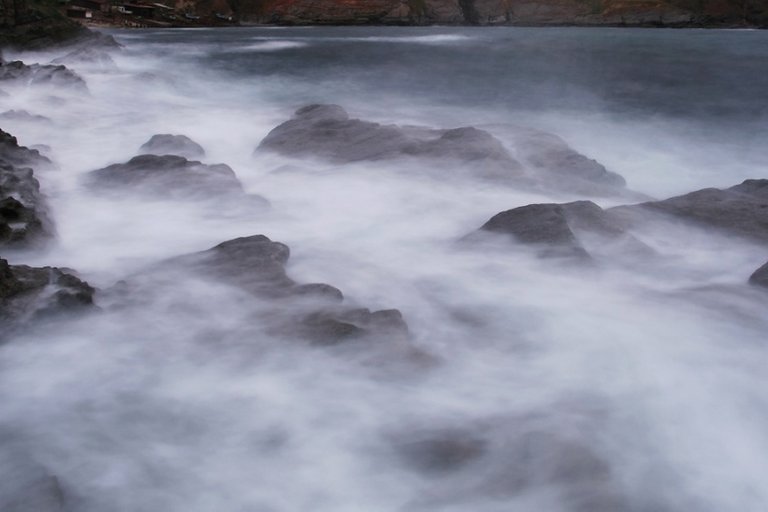
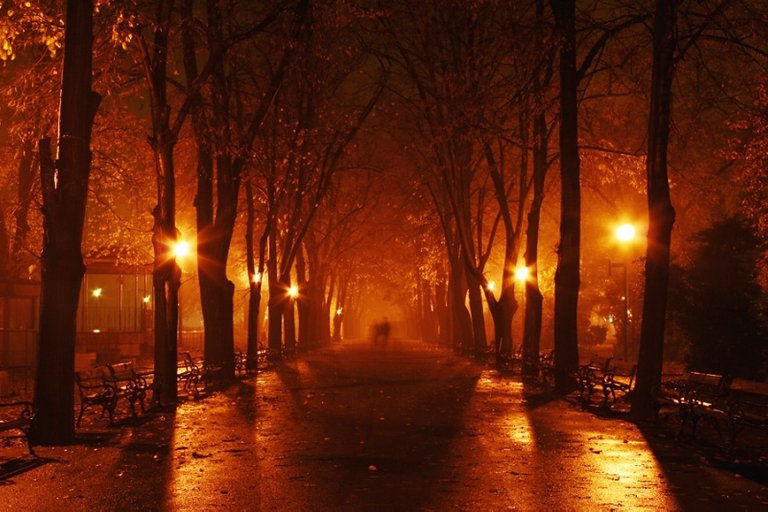
Long Exposure
When we want to accumulate time, light, and motion of some of the objects in our image, we use low shutter speeds at which we need a tripod to steady the camera.
В някои случаи искаме да създадем ефект чрез натрупване на образи. Това начичаме снимане при дълга експозиция – дълго време, което позволяваме. Или с други думи – бавна, ниска скорост. Прави се с помощни средства като статив/ стабилен триножник, на който закрепяме екипировката си.
In other cases, we increase the shutter speed in order to catch shorter fractions of time and to freeze motion to a greater degree.
В други случаи увеличаваме скоростта на затвора, за да уловим по-кратки частици време и да замразим движението в по-голяма степен.
A bit shorter exposure photograph of water — about 1/30 or 1/40 of a second:
Малко по-кратка експозиция на вода – около 1/30 или 1/40 от секундата:
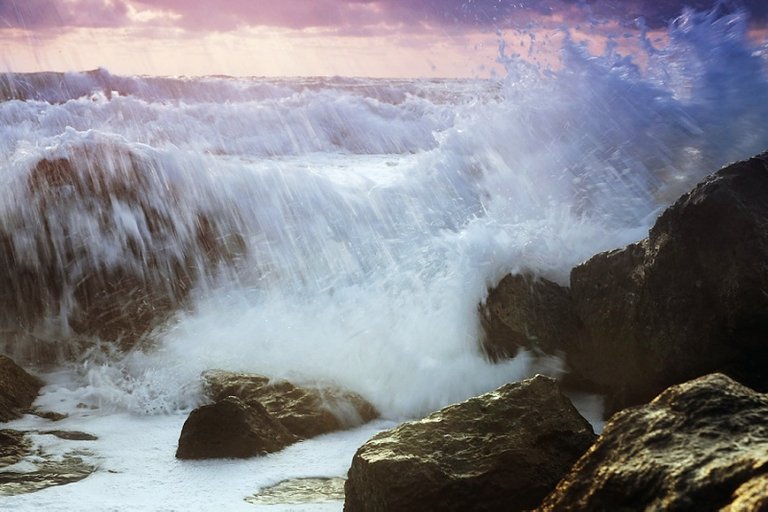
Desired motion blur effect that affects the background while tracking the moving object — under 1/125 of a second:
Размазване на фона като желан ефект при използване на специална техника на снимане, следяща движението на обекта – под 1/125 от секундата:
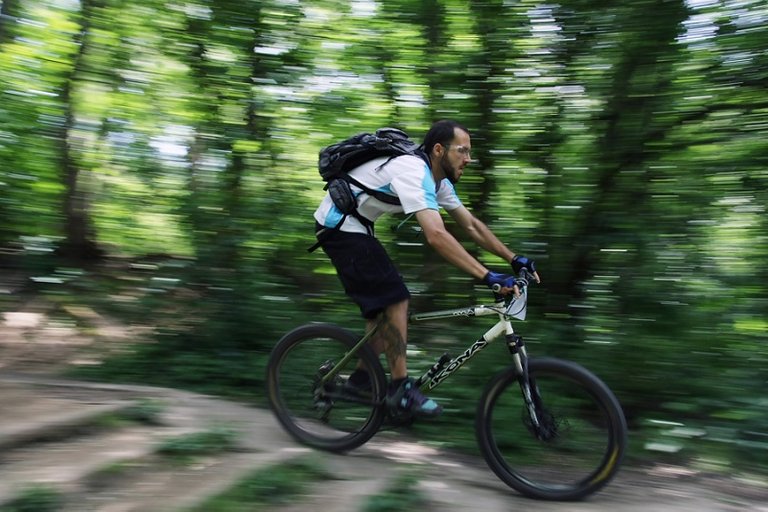
Can we capture things faster than what our eyes can see?
Yes, the shutter speed can be much faster than the fraction of a second our brains register as separate images before blending them together in motion. Actually the blending work does not stop in our heads. A photograph allows us to explore fractions of the second we would not notice in any natural way.
Можем ли да заснемем нещо по-бързо от това, което виждаме?
Да, скоростта на затвора може да бъде много висока и да отпечатаме на снимка много малка частица от секундата – до няколко хиляди пъти по-малка. Мозъкът ни прелива образи постоянно, докато на камера можем да ги видим раздробени на отделни моменти, които иначе не бихме могли да наблюдаваме.
People during sports or other action, fixed in images at shutter speeds above 1/500 of a second:
Спортуващи или просто бързо движещи се хора, фиксирани при скорости на затвора над 1/500 от секундата:
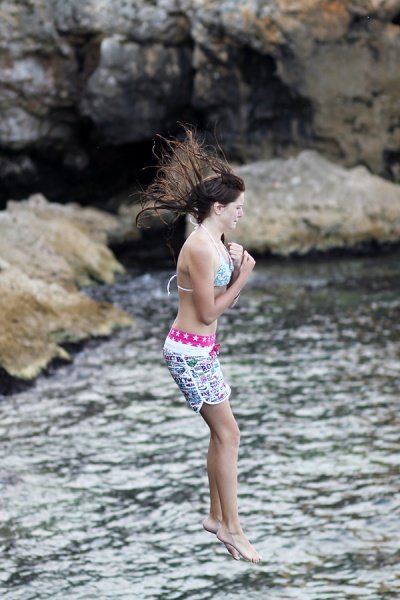
A bird at above 1/1000 of a second:
Птица при скорости над 1/1000 от секундата:
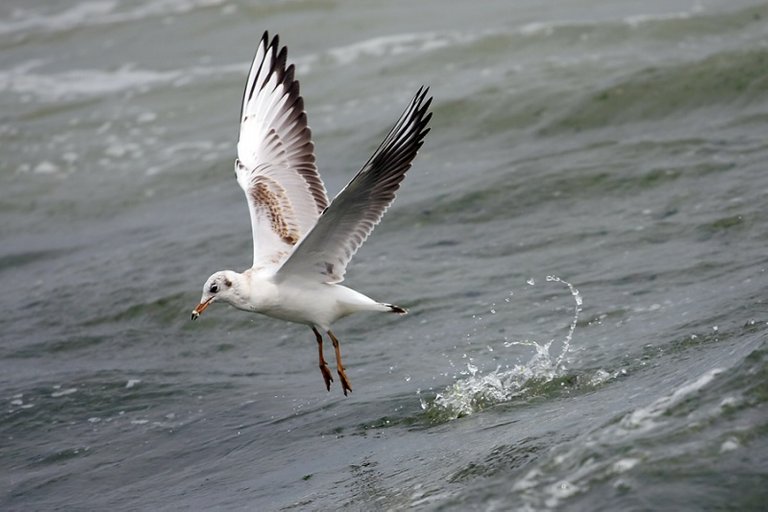
Water droplets of a strong spout our mind sees as a thick and uninterrupted stream at above 1/2000 of a second:
Водни капки от силна насочена струя, която мозъкът ни вижда като непрекъснат и плътен поток, при скорости над 1/2000 от секундата:
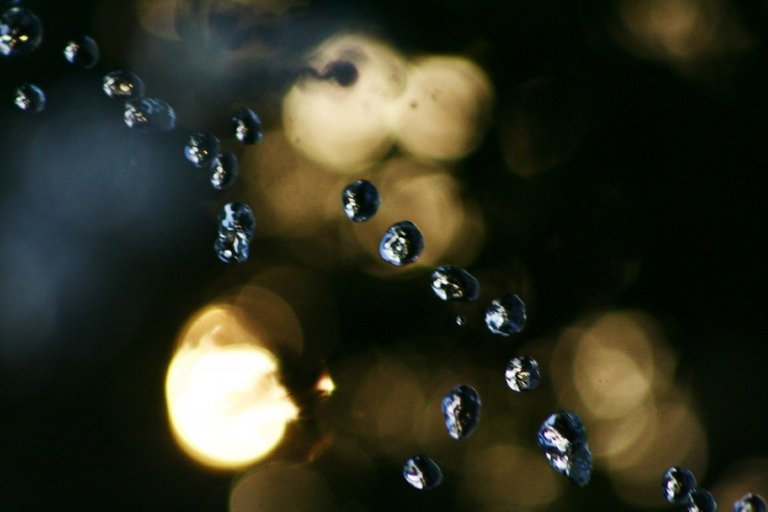
What we should not forget about Shutter Speed
In terms of exposure, it is one of the variables we control and we should constantly consider the balance between it and the other variables — Aperture and ISO. They can compensate for the Shutter Speed we want. Or Shutter Speed can compensate for them. Whichever is more important to us.
Какво да не забравяме за скоростта на затвора
По отношение на експозицията, това е една от променливите, които контролираме и е добре през цялото време да имаме предвид баланса между нея и другите променливи — Бленда и ИСО. Те могат да компенсират за скоростта на затвора, която желаем. Или тя може да компенсира за тях. Което е по-важно за нас.
Thank you for being here! If you have any questions, please comment below!
Благодаря, че сте тук! Ако имате въпроси, моля, коментирайте отдолу!
Yours,
Manol


Awesome tutorial, and some superb examples. I'm impressed with how you were able to capture the cyclist! Not an easy feat.
Yup. Never easy. For some reason, it's called Panning technique (probably because you're moving your camera as if preparing to toss a pancake...)...
Your photography skills are evident in the pictures shared, learning light and speed is something one really has to figure out along with distance.
Modern digital cameras have given us a wonderful tool to be able to practice more.
Thanks for sharing you wonderful tips.
Thanks.
Digital cameras, mostly because they are modern cameras, give us a great range. I remember my father's analogue 40-year-old Zenith could shoot ad 1/500 sec. max speed compared to my 10-year-old Canon EOS that can shoot at 1/8000 sec.
Tweeting and making some #posh noise here:
Great tips and cool examples; I'm still struggling with the technicalities... lol
Thanks :) Read the technicalities. Learn them. Forget about them ;)
Hahaha, ok... I like that! :D
This informationis helpful for me. I was trying to get some. blurry waterfalls today.
Excellent. Did you manage? You might need a tripod, a darkening filter so that you can make the picture dark despite opening the shutter for too long. When you can close your aperture no more and lower the ISO no more, the next step is dark filters.
I too an alright photo, it wasn't a very good waterfall though. I'll try something better first. I had no idea about the dark filters. I'll take a look into it
Beautiful pictures and good tutorial :)
Thank you very much!
This is a really useful post for anyone interested in improving their photo skills!
Thanks. It's part of the basics but there's also a variety of techniques to be tried, hidden here.
Very informative...tnx
Nice tutorial!
Reblogged.
Thank you for your support!
What a great tutorial, what great photographs!
I really appreciate the reminder. I used to bracket shutter speed in the days when you used a light meter to set shutter speed on film. Though I adjust SS now, I don't have to think about it at all.
Thanks for a wonderful lesson!
Yup, at some point it becomes a reflex and you don't need to think a lot about it. Only during specific tasks.
Thanks for sharing this info. Great examples!
Thanks. That's what I came up in a short time. I am sure we can all delve and find more interesting examples in our archives.
Amazing shots, excellent teaching! 😃 Thank you!
I thank you, too, for stopping by and commenting. Good speed!
Fantastic lesson, @manoldonchev! And your photography, as always, is breathtaking. I really love the cyclist, perfectly clear, with the background blurred behind him.
Thanks, @jayna :) I'm happy you like it all.
The cyclist is nearly clear, rather than perfectly clear. But relativity is the trick ;)
Ha ha, well I'm sure you have a much better eye for it than I do, and you also scrutinize your own photography more than another person would.
Wow, friend @manoldonchev
Excellent post. I am a lover of photography, but I suffer a lot because I could not have a reflex camera. I do what I can with my all-purpose camera hehe
I really loved your tutorial
Thanks for your comment! If you can control your settings manually, you can do a lot even with a compact camera.
Otherwise...
One of the next lessons will be about composition and it applies to any kind of camera. And it should help anybody who's new to that.
Love seeing your photos and reading about the science behind the art
Thanks! It's a one-day-to-learn science and then art to learn for your whole life.
I've always been curious about photography. Mostly because I would love to start taking my own references for my art.
What entry range camera would you recommend for a beginner looking to get so fairly good references?
That's a tough question because it depends on many, many preferences. A mirrorless is an expensive but lightweight choice. And it requires special small lenses to provide a variety so too costly for that purpose. DSLRs are pretty heavy to carry around and you'll probably miss yours in a lot of situations when you left it at home. And it's costly again. There is a cheap way — get to know what style you are looking for and get a set second hand. But that has its risks. Nobody can promise it will work for long. Although mine usually does.
I would probably go for a turbo zoom class compact camera. Fuji used to make relatively cheap and good ones. I don't know where they are now. In any case, do your research. I check sites like dpreview.com (Digital Photography Review) and make my comparisons.
Thanks for the advice.
Awesome post by the way
Great information and beautiful photos.
Thank you! I hope something new was there for most people to take home.